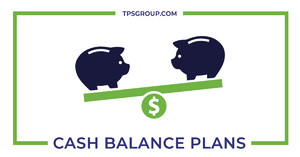Posted on Mar 16, 2022
Cash balance plans can offer high-income business owners and executives significant tax advantages and a way to build large retirement assets. A cash balance plan is an employer-sponsored defined benefit plan with required annual contributions. It can be created by any business entity, and is especially attractive to partners and owners who want to catch up on retirement savings and whose businesses are generating a healthy profit each year.
Employers can still set up a cash balance plan for 2021 retroactively, until the due date for tax returns and extensions. This means that as long as the company’s plan is adopted and contributions are made by the tax return/extension deadline, the employer can reap the tax advantages now. For C-Corporations and sole proprietorships, the deadline is April 15 and September 15 if an extension is filed. For S-Corporations and partnerships, the deadline is March 15 and September 15 if an extension is filed.
When a cash balance plan is created, the employer credits the participant’s account with a set dollar amount or a percentage of yearly compensation, plus an annual interest credit that is independent of the plan’s investment performance. A cash balance account resembles a 401(k) or profit-sharing plan, but unlike a 401(k), employees are generally not required to contribute a portion of their salary to the plan. Also, the final vested benefits are guaranteed when the participant retires or terminates employment.
Cash balance plans can be instituted in addition to a 401(k) plan, but they allow for higher contribution limits based on the participant’s age and earnings level. In 2022, the cash balance plan limit is $245,000, but this number can be doubled for married couples who both work in the business.
Cash balance plans can be a win-win for the employer and for employees for these reasons:
- Funds contributed to the plan are tax deductible the first year the plan is implemented, and it is not too late for employers to set up a 2021 plan.
- Assets can grow quickly, benefiting highly-compensated employees as well as other plan participants.
- The employer can offer both a cash balance plan and a 401(k) plan.
- Compared to the limit on contributions for 401(k) plans, cash balance plans allow for generous contribution limits that increase with age, and can help older, high-income employees quickly boost retirement savings.
- As a qualified retirement plan, cash balance assets are protected from creditors.
- Taxation on benefits is deferred until participants withdraw funds as income, just as in a 401(k) plan.
This material is provided for informational purposes only, and is not intended as authoritative guidance, legal advice, or assurance of compliance with state and federal regulations.
Back to Blogs Helpful Resource Links
